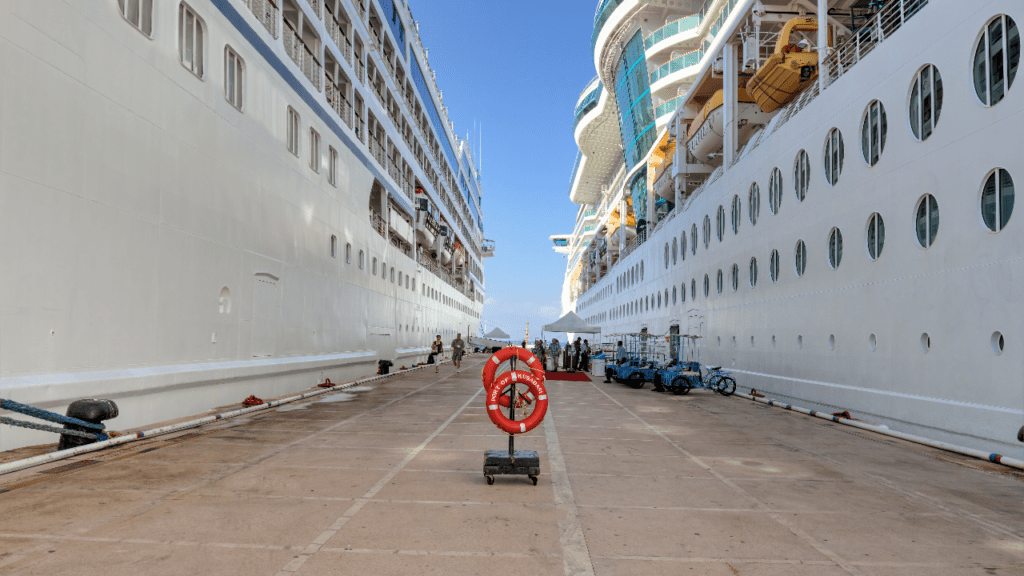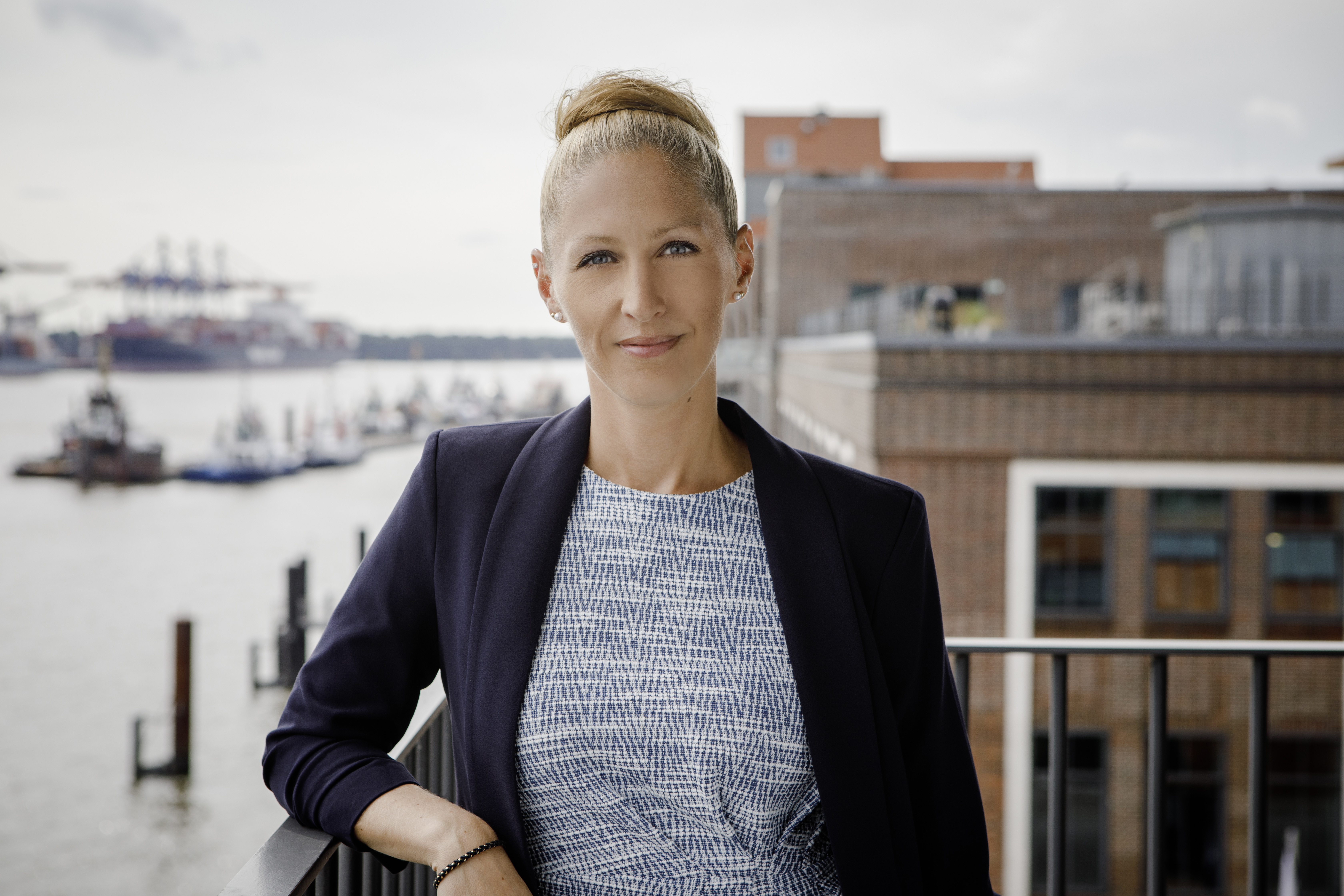As managers of more than 3,000 port calls annually, COLUMBIA Cruise Services fully understands the need for regular port assessments. Ports are, of course, critical to our industry, welcoming our ships and guests on a regular basis to experience the delights that each destination offers, but ports can also pose significant risks to ships and crew members. It is through comprehensive and meticulous port assessments that these risks can be identified and mitigated. In this blog post, we will delve into the main areas of a thorough port assessment, highlighting their importance in maintaining safety, security, and efficiency for cruise ship operations.
Nautical Safety and Security
Making sure that in each port the cruise ship can come in safely is the overall goal of nautical safety and security and it starts with an evaluation of each ship’s own preparedness and ability to smoothly handle risks.
The safety and security of passengers, crew members, and the vessel itself are of paramount importance. As an industry that has built a reputation for offering one of the safest vacation options in the world, cruise ships take safety and security procedures seriously. We look at depth of the water in the port or in the channel and weather prognosis for that port. Regular practice drills, comprehensive emergency response plans, and strict adherence to security protocols are cornerstones of a safe cruise ship. By continuously evaluating and improving these aspects, cruise ship operators ensure a high level of preparedness to handle any potential risks or emergencies that may arise during port calls.
Infrastructure

When it comes to port operations, each ship knows best the type of activities it will engage in while in port. Therefore, assessing the condition of port infrastructure, such as docks, piers, and cranes, becomes essential to ensure they can adequately support the ship’s itinerary. We look at the cruise terminal and facilities so that passengers can easily embark and disembark smoothly, including passengers with a physical disability. By conducting port assessments well in advance, cruise ship operators can acquire and review relevant documents and data, allowing them to plan for a seamless arrival and departure. It is also important to evaluate access from the airport to the cruise terminal (for turnaround ports) to ensure a smooth embarkation and disembarkation for passengers. A thorough evaluation of port infrastructure guarantees that it is in proper working order and can accommodate the ship’s needs efficiently, promoting smooth operations during port calls.
Environmental Considerations
The cruise industry takes great pride in being at the forefront of responsible environmental practices. Port assessments must evaluate potential environmental risks and challenges, such as pollution and waste management, with a focus on ensuring that both the cruise ship and the port are committed to environmental stewardship. By assessing the environmental impact of innovative technologies and port activities, cruise operators can identify areas for improvement and work collaboratively with ports to implement sustainable practices. Port assessments provide an opportunity to promote eco-friendly initiatives and ensure that cruise operations align with environmental regulations and guidelines.
Port Services
Every port is unique, offering a distinct blend of culture, resources, and attractions for guests to experience during a port call. However, it is equally important to evaluate the behind-the-scenes services and facilities that enable a smooth and seamless time in port. Port services such as pilotage, tug services, and bunkering play a vital role in the overall efficiency of cruise ship operations. Therefore, during a port assessment, these essential elements must be thoroughly evaluated to ensure they meet the ship’s needs. By assessing the availability, quality, and reliability of these services, cruise ship operators can ensure that their guests have a hassle-free experience, both on and off the ship.
Weather Conditions and Navigational Challenges
Weather plays a crucial role in the safe navigation of cruise ships. Port assessments should include a detailed analysis of the local weather patterns, including wind, waves, and currents. Understanding the weather conditions and any potential navigational challenges specific to each port allows ship captains to make informed decisions regarding arrival and departure times, ensuring the safety of passengers and crew.
Emergency Response Capabilities
Assessing the emergency response capabilities of each port is essential for cruise ship operations. Ports should have well-defined emergency plans in place, including procedures for medical emergencies, search and rescue operations, and coordination with local authorities. Evaluating the effectiveness of these plans helps ensure a swift and coordinated response in case of emergencies, enhancing the overall safety of the cruise experience.

Port Capacity and Congestion Management
Port capacity and congestion management are critical factors that can impact the efficiency of cruise operations. Assessing the capacity of each port to handle the influx of cruise ships, passengers, and crew helps prevent overcrowding and delays. Evaluating the port’s ability to manage vessel traffic, allocate berths, and provide efficient passenger and baggage handling facilities allows cruise operators to optimize their itineraries and enhance the overall guest experience.
Cultural and Tourism Considerations
Cruise ship passengers often embark on shore excursions to explore the local culture and attractions. Port assessments should include an evaluation of the cultural and tourism offerings available at each destination. This includes assessing the availability and quality of tour guides, transportation services, and attractions to ensure that guests have a memorable and enriching experience during their time ashore.
Port Accessibility and Universal Design
Ensuring accessibility for passengers with disabilities is a crucial aspect of port assessments. Evaluating the accessibility features of each port, such as ramps, elevators, and accessible transportation options, helps cruise operators cater to the needs of all guests. Ports that prioritize universal design principles create a welcoming environment for passengers with disabilities, enhancing inclusivity and customer satisfaction.
Health and Sanitation Measures
In light of recent global health concerns, health and sanitation measures have become even more critical in the cruise industry. Port assessments should include an evaluation of the port’s adherence to health and sanitation regulations, such as cleanliness standards, food safety practices, and infectious disease prevention protocols. Assessing the port’s commitment to maintaining a healthy and hygienic environment supports the overall well-being of passengers and crew

Port Reputation and Passenger Feedback
Considering the reputation of each port and gathering passenger feedback can provide valuable insights during port assessments. Reviews and feedback from previous cruise ship visits help cruise operators assess the overall passenger experience, including aspects like friendliness of port staff, efficiency of embarkation and disembarkation processes, and the overall satisfaction of guests. Taking into account passenger feedback helps cruise operators make informed decisions when selecting ports for future itineraries.
Done thoroughly and knowledgeably, port assessments are the best way to ensure each port call offers safety and security for all. With these points for a thorough port assessment, cruise ship managers can ensure not only safe and efficient operations but also an exceptional guest experience at every port of call. Continuous evaluation and improvement of port services and facilities contribute to the long-term success and sustainability of the cruise industry. By focusing on safe and efficient operations, cruise ship managers make it easy for guests to keep coming back to enjoy the allure of world travel in this unique way.





